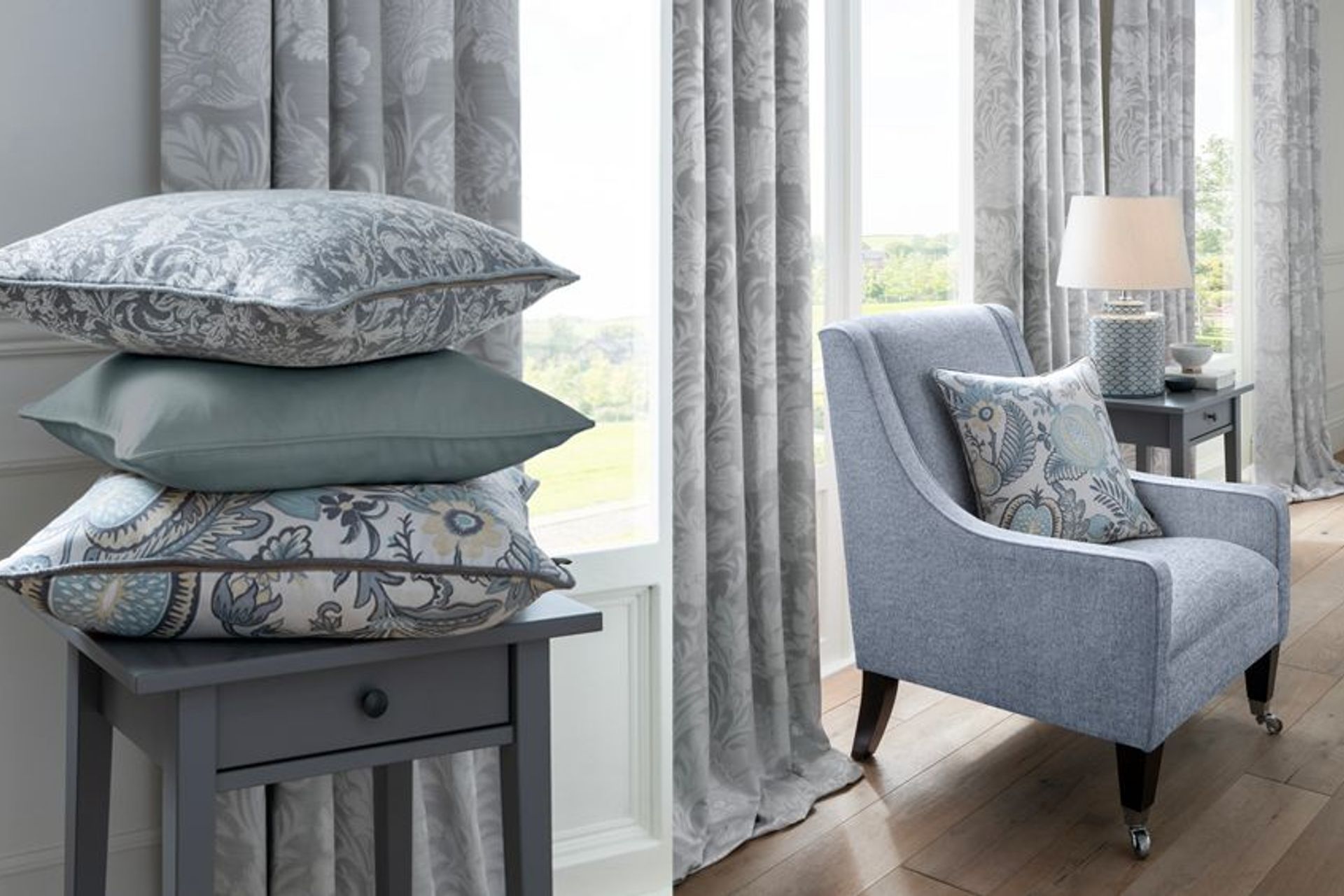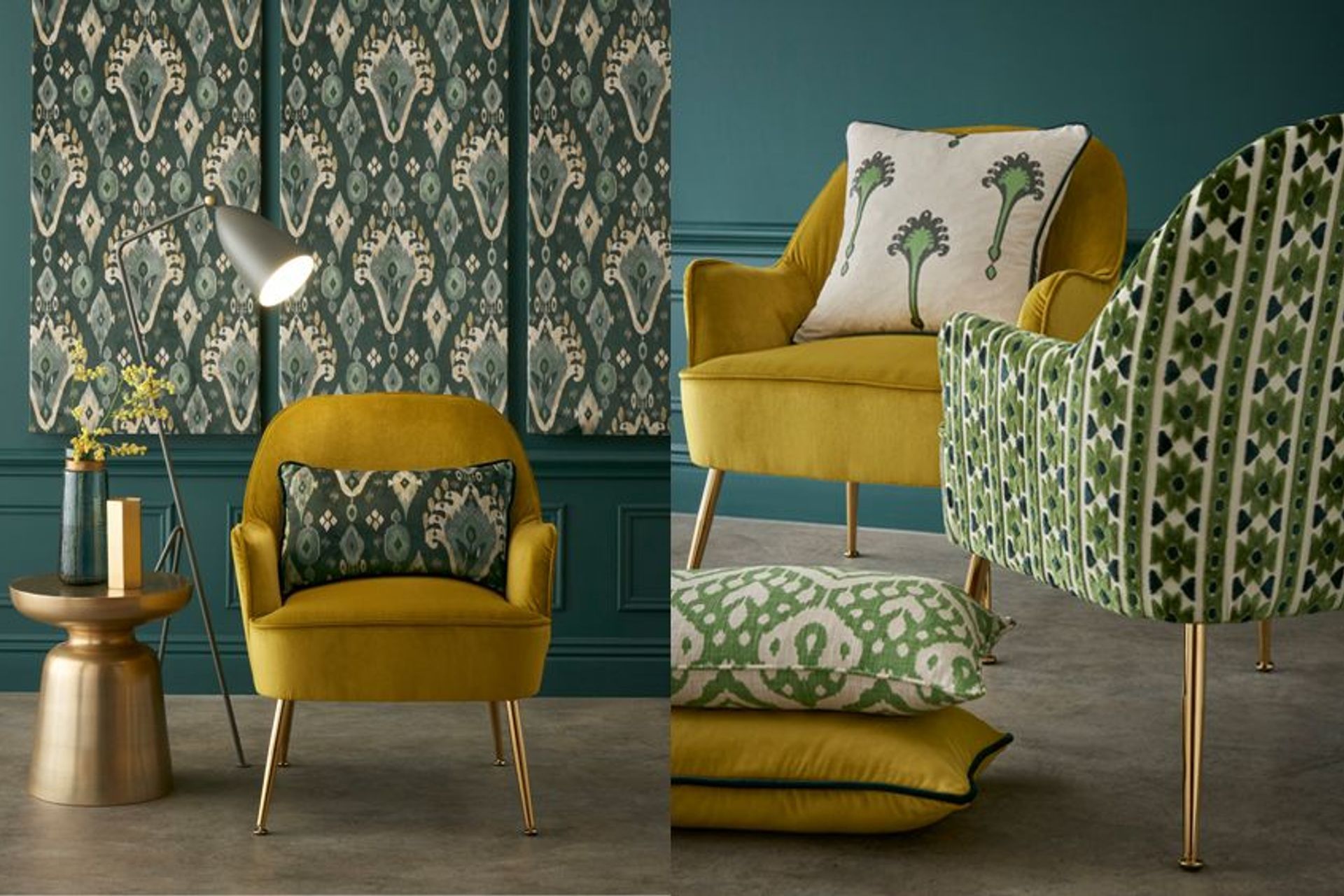Fabric trends 2022: Why fabrics are getting more vibrant, unique and sustainable
Written by
10 March 2022
•
4 min read

Decor is the primary medium through which we can introduce character into our homes. Furniture, wall coverings, upholstery, art, photography, accessories — they all provide a means to tell a story about ourselves, to reflect our personalities, to make a resonant impact when you walk through the door.
Colour is an extremely important vehicle through which to convey this. Blues and sandy colours can create a coastal feel, while greens and browns make for an earthy vibe.
But in the last decade or so, the trend towards minimalism has meant that, while decor choices were more varied and unique, colour choices skewed towards the neutrals, meaning things like curtains and drapery were consistently drab whites, greys and shades of black.
But recently in New Zealand, that trend has begun to buck — many more people are introducing colour and nature-inspired patterns into their curtains and drapery. Guthrie Bowron general manager for soft furnishings Safia Haythorne says for the last 10 years, this trend has been present — albeit hiding in the background, remaining dormant until its emergence into the mainstream around the beginning of the pandemic.
“Natural materials and earthy tones have remained extremely popular,” says Safia. “The linen and the linen cotton blends continue to feature and have done throughout the last 10 years, but the strength of that trend has shifted dramatically.”
She says the enduring pervasiveness of lockdowns has resulted in a yearning to bring the outdoors inside.
“It's actually had quite an impact on people's living arrangements and style,” says Safia. “As they spend more time confined to those four walls, they’re wanting to incorporate more personality into the space.”

Fabrics as feature pieces
Before this trend shift, New Zealanders tended to be more conservative when it came to curtains and other soft furnishings: if they wanted to introduce colour, they would typically take the route of painting walls or introducing wallpaper.
But now, soft furnishings are increasingly becoming ‘feature pieces’. “Now, a lot of people are happy to go bright and bold with their fabric choices, creating striking window dressings and unique furniture pieces.
With the trend opening up so many more fabric opportunities, retailers like Guthrie Bowron are providing fabrics that cater to every type of style, look or feel that can be created through curtains and soft furnishings.
“You can create a bright space or a neutral space,” says Safia. “You can create a nature-inspired space with leaf prints or natural greens and browns. Or you can go a bit more conservative while still branching out, by finding a leafy print and pairing it with a neutral colour, for example.”
Aspiring home decorators also have the option of creating a cohesive look with other Guthrie Bowron products, Safia says — not just the fabrics for curtains.
They can get paint, wallpaper, flooring* and more from the store, cementing its place as a one-stop-shop for home development and renovations.
“So when someone comes into the store, and they're looking for fabrics and trends, they can also take advantage of our entire range and create a well-rounded, cohesive style — from walls to windows, floors to soft furnishings.”

Sustainability in the new era of fabrics
Of course it’s not just colour and vibrant prints that set Guthrie Bowron’s fabrics apart: the company also ensures that sustainability plays a major role in its business.
Where possible Guthrie Bowron supports fabric suppliers whose cotton adheres to standards set by the Better Cotton Initiative (BCI), the world’s largest cotton sustainability programme. The initiative, which has over 2,000 members worldwide, aims to guide the sector to help producers enjoy better yields, and improve working conditions and financial security.
“Adhering to BCI standards means the cotton is properly regulated,” says Safia. “The labour is checked, the product is of good quality, and everything is authentic and above board.”
Even with fabrics that utilise plastic, the company supports fabric suppliers whose manufacturing and production processes are environmentally conscious — in line with the attitude of many of its customers.
“I think people are making those conscious decisions where they want to protect the environment,” says Safia. They can do this, she says, by shopping sustainably and buying sustainable products.
She says many mills are now producing sustainable fabrics. They've worked out ways in which they can combine both recycled plastic along with other fibre yarns and they create a blend of recycled polyesters.
“This is the future of fabrics,” says Safia. “We’re not only moving to a more exciting era of vibrant colours and prints, we’re also shifting to a more sustainable one.”
Learn more about Guthrie Bowron’s products.
*Flooring is not available in all stores.